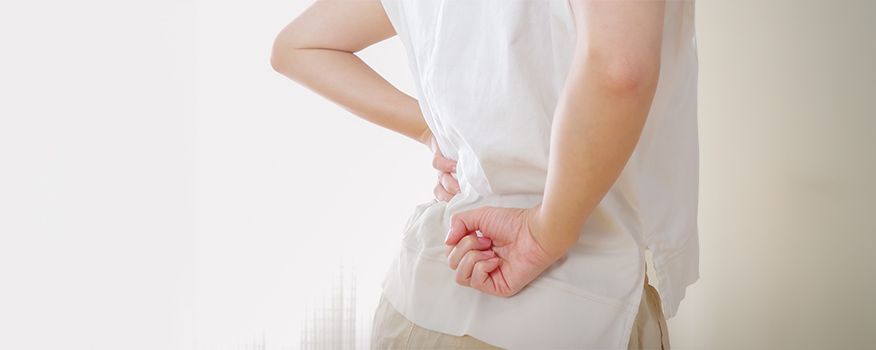By Tori Klein
•
March 13, 2019
Top Causes of Low Back Pain and How a Chiropractor Can Help Low back pain is one of the most common medical complaints that affects millions of people worldwide. Whether it’s a dull ache or a sharp, debilitating pain, low back pain can impact your daily life, making even simple activities like walking, sitting, or sleeping difficult. If you’re experiencing this type of discomfort, you’re not alone—it’s estimated that around 80% of adults will experience some form of low back pain during their lives. At Bell District Spine & Rehab, located in Cedar Park, TX, we understand the frustration and limitations caused by low back pain. Fortunately, many causes of low back pain can be effectively treated with chiropractic care. Here are the top causes of low back pain and how a chiropractor can help relieve your discomfort and restore mobility. 1. Muscle Strains and Sprains One of the most common causes of low back pain is muscle strain or ligament sprain. This can occur from improper lifting, sudden awkward movements, or overexertion during physical activities. When the muscles or ligaments in the lower back are overstretched or torn, it leads to inflammation and pain. These injuries may be acute (short-term) or chronic (long-term), depending on the severity. How a Chiropractor Can Help: Chiropractors are skilled in assessing and treating musculoskeletal injuries like muscle strains and ligament sprains. Chiropractic adjustments can help realign the spine, reduce muscle tension, and alleviate pressure on the injured areas. Additionally, chiropractors may provide soft tissue therapies, such as massage or myofascial release , to ease muscle tightness and promote healing. 2. Herniated or Bulging Discs A herniated disc (also known as a slipped disc) occurs when the soft material inside a spinal disc protrudes through the outer layer and presses against nearby nerves. This condition can cause significant pain, numbness, and tingling in the lower back, legs, or feet. Bulging discs are similar but involve the disc swelling outward without fully rupturing. How a Chiropractor Can Help: Chiropractors specialize in spinal manipulation techniques, which can help to gently realign the vertebrae and reduce pressure on the nerves caused by herniated or bulging discs. Spinal decompression therapy is another common chiropractic treatment for disc issues, designed to relieve pressure on the spine by gently stretching it and creating negative pressure that allows the discs to rehydrate and heal. 3. Sciatica Sciatica refers to pain that radiates along the sciatic nerve, which runs from the lower back, through the hips, and down each leg. This condition is often caused by a herniated disc, spinal stenosis (narrowing of the spinal canal), or piriformis syndrome (muscle tightness in the buttocks). Sciatica can cause shooting pain, numbness, or tingling, and it may worsen when sitting, standing, or walking for extended periods. How a Chiropractor Can Help: Chiropractors are highly effective in treating sciatica by targeting the root cause of the pain, whether it’s a disc problem, spinal misalignment, or muscle dysfunction. Spinal adjustments can reduce pressure on the sciatic nerve, while soft tissue therapy can help relieve tightness in the muscles that may be compressing the nerve. Chiropractors may also recommend specific exercises and stretches to strengthen the muscles of the lower back and improve posture, preventing future flare-ups. 4. Poor Posture Many individuals who spend long hours sitting at desks, working on computers, or looking down at their phones experience low back pain due to poor posture. Over time, slouching or hunching forward can strain the muscles and ligaments in the lower back, leading to discomfort and stiffness. Poor posture can also contribute to spinal misalignments, which can exacerbate low back pain. How a Chiropractor Can Help: Chiropractors are trained to assess and correct postural imbalances. Through chiropractic adjustments and spinal manipulation, they can realign the spine and relieve the pressure caused by poor posture. Chiropractors may also provide ergonomic advice, teaching patients how to sit, stand, and move properly to prevent unnecessary strain on the lower back. Additionally, specific exercises and stretches can be prescribed to strengthen the core and support better posture. 5. Spinal Stenosis Spinal stenosis occurs when the spaces within the spine narrow, putting pressure on the spinal cord and nerves. This condition is most common in older adults and can cause pain, numbness, or weakness in the lower back and legs. The narrowing of the spinal canal can result from age-related wear and tear, such as disc degeneration or bone spurs, which can compress the nerves and cause discomfort. How a Chiropractor Can Help: While spinal stenosis may require a more comprehensive treatment approach, chiropractors can provide relief by using gentle spinal adjustments to improve spinal mobility and reduce pressure on the nerves. Chiropractors may also recommend spinal decompression therapy to alleviate the pressure on the spinal cord and improve circulation in the affected areas. Lifestyle modifications, including exercises to strengthen the muscles supporting the spine, may also be recommended to help manage the condition. 6. Spondylolisthesis Spondylolisthesis is a condition in which one vertebra slips forward over the vertebra beneath it, leading to instability and misalignment in the spine. This condition can cause pain and discomfort, particularly in the lower back. Spondylolisthesis may be caused by congenital issues, trauma, or degenerative changes over time. How a Chiropractor Can Help: Chiropractors can help manage spondylolisthesis by using non-invasive spinal adjustments to restore spinal alignment and reduce the risk of further slippage. Chiropractors may also incorporate exercises that improve core strength and spinal stability, reducing the risk of worsening the condition. Massage therapy can help relieve muscle tension that may result from the instability in the spine. 7. Osteoarthritis Osteoarthritis (OA) is a degenerative joint disease that can affect the spine and lead to low back pain. As the cartilage in the joints breaks down over time, bones can rub together, causing pain, inflammation, and stiffness. OA is common in older adults, but it can also affect younger people who have experienced joint injuries or have poor posture. How a Chiropractor Can Help: Chiropractic care can help manage the symptoms of osteoarthritis by improving joint mobility, reducing inflammation, and relieving pressure on the affected areas. Spinal adjustments can improve the range of motion in the spine and reduce stiffness. Chiropractors may also recommend therapeutic exercises, stretches, and lifestyle changes to help alleviate pain and improve joint function. Low back pain can be caused by many different factors, ranging from muscle strains to spinal conditions like herniated discs or arthritis. Regardless of the cause, chiropractic care offers a holistic, non-invasive treatment approach to managing and relieving low back pain. At Bell District Spine & Rehab our chiropractor is dedicated to helping you find relief from chronic low back pain. We offer personalized treatment plans that may include spinal adjustments, spinal decompression therapy, physical therapy, and lifestyle advice to address the root causes of your pain. If you’re suffering from low back pain in Cedar Park and are seeking a natural, effective solution, contact us today at 512-257-2225 to schedule a consultation. Let us help you get back to living your life pain-free.




